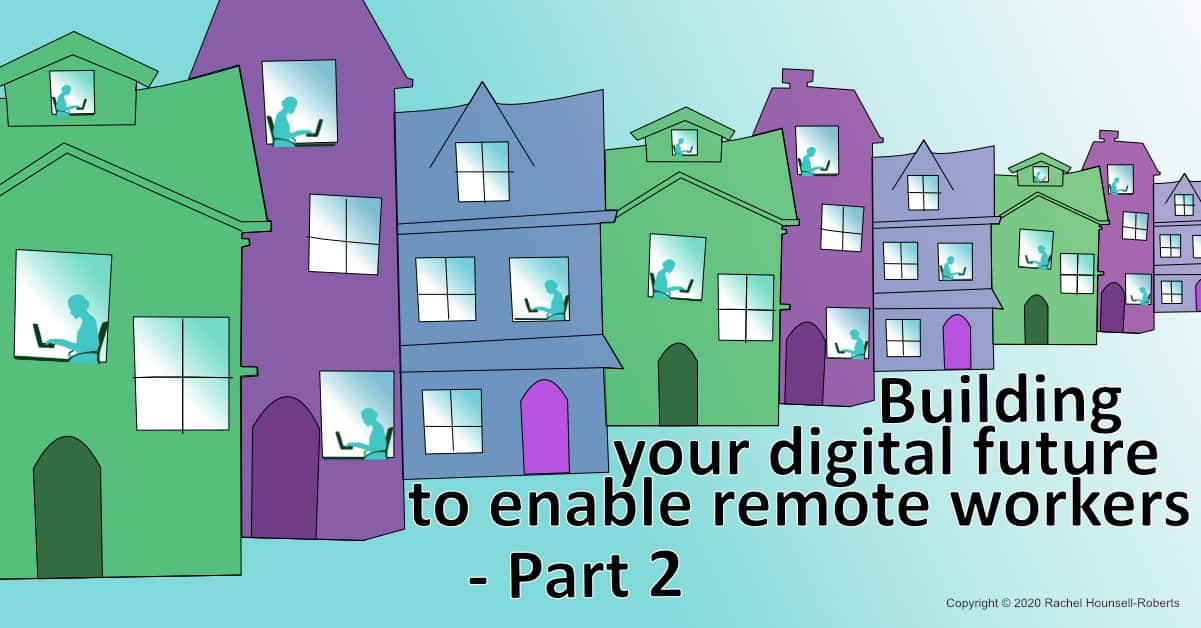Adapting to technology, how hard can it be? You’ve mastered video meetings, discovered the power of spreadsheets, and everything’s in the cloud. What more is there? Perhaps that’s all you need; in which case you don’t need to read further.
Building your digital future

On the other hand, you might be an ambitious business leader, and want your business to be bigger and better. You might be looking at remote working and thinking that it’s taking too long to get things done. You’ve hired good people, and you want to make it easier for them to be productive. Yet instead of working together, they’re looking more like remote islands doing their own thing. Time for a rethink and a better way of doing things?
Our three-part series takes a fresh look at helping remote workers. Part one “Support remote workers with digital systems” outlined three common issues and solutions. This part looks at how a business can adapt using technology. Finally, part three digs into driving successful technology adoption in “Adopting Technology: Making it Happen”.
Many struggle with getting the best of out of technology. Our guide, Business Technology: Essential Guide to Best Use, will help you create a robust process to ensure your new tech achieves your aims.
#1 Clarify

Business leaders can feel stuck when it comes to adapting to technology. You might have a gut instinct that it can powerfully change your business. It could be a game changer. You know where you’re headed, but somehow there’s a gap in the thinking. The pathway’s not clear!
When a train of thinking isn’t working, it’s time to approach the problem from a different angle. Leaders can fixate on a solution when they need to take time to define the problem. As John Dewey said, “A problem well put is half solved”. Shifting to describing the problem is insightful.
#2 Define
You’re adapting to technology for a reason. Is it a major change to the business, or an operational tweak? What’s that reason? What does that look like from different viewpoints? How does the business benefit? Customers? Staff? Suppliers? Describing the problem and benefits creates clarity and overview.
#3 Research

Armed with a description of the problem, you can now research what’s out there. Look at technology advances as well as existing products. Gain an understanding from product overviews, tutorials and demos. Use these insights to inform choices.
#4 Solve
When thinking about a solution, consider where you want to be: Your immediate and future needs. This will help ensure the solution has a longer shelf life. Use the problem descriptions to focus on what will really help the business. Identify what’s out the box and where there are gaps. Could you live with the gaps or are they showstoppers?
Summary
Adapting to technology combines looking at how your business will need to operate in the future and technology advances. There are opportunities to grow where challenges intersect technology solutions. Clearly defining the problem to solve and matching to available solutions is a powerful approach to gain an advantage.
Some leaders struggle to figure out what’s needed; others feel overwhelmed with all the possible choices; and a few feel frustrated that they’re just not moving fast enough. Meet with me for a free 30-minute virtual call and let’s work together to explore the best way forward for you and your business.
Related Articles
If you’d like to explore the ideas in this article further or need help and advice, please contact Rogan at rhounsell@kr5consulting.com – to arrange an informal chat.
If you’ve found this blog interesting or useful, please ‘like’, ‘comment’ or ‘share’ so it can help others too.


HI thanks so much for talking about this side of working in digital.